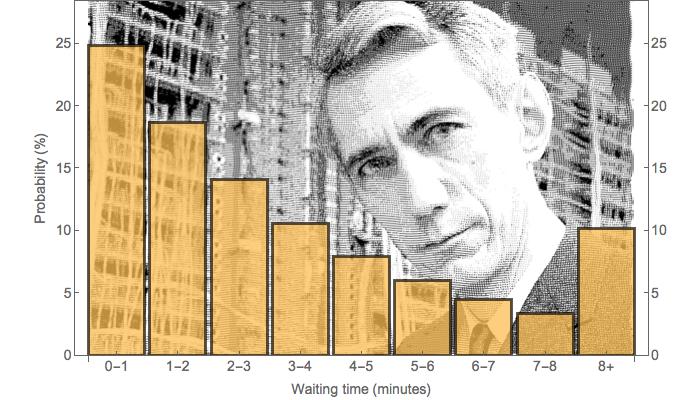In Amsterdam, on average, you are picked up within 3.5 minutes.
According to Uber, though it adds the disclaimer The pick-up time may vary due to traffic or other circumstances.
Now, how long in advance should you book your ride?
You could reason as follows. The pick-up time cannot be shorter than zero minutes, and the average is 3.5 minutes, therefore the longest waiting time must be 7 minutes. The reasoning makes sense, but is wrong. If it were correct Uber could advertise with Pick-up within seven minutes. Guaranteed. But they don’t and they can’t.
Again, how long should you plan to wait?
As a data scientist I turn for help to Claude Shannon, the stern looking gentleman in the figure. Shannon is regarded the father of the information age, our current era. According to Shannon, information is measured by Entropy. And our information is the average of 3.5 minutes. Doing the Math, by maximizing Shannon’s Entropy, the bar chart of waiting times gives the answer.
The length of left-most bar, indicated by 0-1, shows that in 25% of your calls you have to wait less than one minute; Uber is essentially already in your street. The second bar (1-2) shows than in 19% you wait between one and two minutes; Uber is “around the block”. (Amsterdam has no blocks, though.)
The third bar (2-3 minutes) covers for the next 14%. By adding the first three bars, in 58% of the your calls Uber arrives within three minutes. Perhaps to your surprise you are picked up often much earlier than the advertised average of 3.5 minutes. This may seem in contradiction but it is correct.
The devil is in the details, viz. in the tail of the skewed distribution. The bars do continue, even after 6-7 minutes bar. The right-most bar (8+) sums up all waiting times from 8 minutes and longer. This bar tells you that in some 10% of all the calls you have to wait much longer than you might expect.
So keep this in mind next time when you book your ride.

